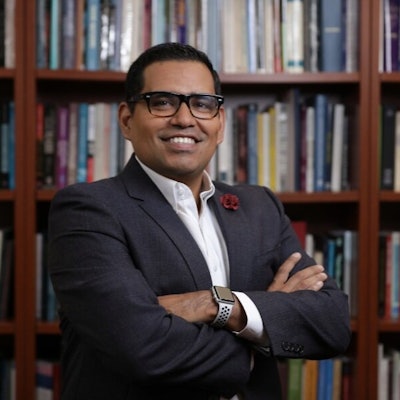The Center for Community College Student Engagement’s (CCCSE’s) latest survey has found that over one quarter of community college students, particularly students of color, are facing basic needs insecurity. Yet, despite balancing their educational careers with the struggles of accessing food and housing, CCCSE found these students demonstrated more involvement and engagement with their education.
 Dr. Linda Garcia, executive director of CCCSE at the University of Texas at Austin.
Dr. Linda Garcia, executive director of CCCSE at the University of Texas at Austin.
Garcia said she hopes this report can encourage community and technical colleges to continue to assess student needs and build support through partnerships or individual, institutional action.
The report, "Mission Critical: The Role of Community Colleges in Meeting Student’s Basic Needs," recognizes institutions that have come up with creative solutions to basic needs insecurities, like free breakfast and lunch programs. Long Beach City College (LBCC) in California built a pilot program allowing students to safely sleep in their cars on campus, and Cuyahoga Community College in Cleveland partnered with nearby four-year Cleveland State University to build student housing for single, parenting students.
“Students want to know they are cared for,” said Garcia. “When the college does provide support services, whether its food pantry, a gift card for gas or the grocery store, connecting them with a community food pantry they didn’t know existed, students know the college cares about them and wants them to be successful.”
CCCSE surveyed 82,424 students from 195 community and technical colleges throughout the U.S. to produce their findings. The results revealed that 29% of respondents indicated they were food insecure at some point within 30 days of taking the survey, and 14% indicated housing insecurity within the last year. Native Hawaiians, Alaska Natives, Pacific Islanders, Native Americans, and Black students had the highest percentages of needs insecurity.
 Dr. Eric Felix, assistant professor of higher education at San Diego State University.
Dr. Eric Felix, assistant professor of higher education at San Diego State University.
At LBCC, that safety and support came in the form of a pilot program. Through its own assessment, LBCC administration discovered approximately 70 of their students were living out of their cars. So, LBCC created the Safe Parking Pilot Program, allowing students free overnight parking and wireless in a garage on campus with guaranteed access to restrooms and showers nearby. LBCC also paid for security to watch the garage, allowing the students to feel safe while they rested.
Security absorbed the majority of the $200,000 spent on the program, which ended in June 2022. An upcoming report on the program’s effectiveness will soon be delivered to the administration.
“Long Beach City College has been a leader in this the last couple of years,” said Felix. “They treat basic needs as a human rights issue.”
Some students interviewed by CCCSE said their basic need insecurity coupled with a feeling of shame and inadequacy, kept them from revealing the deepness of their need to trusted family or friends. Because of this stigma against homelessness and hunger, it can be difficult for colleges to know just how many of their students are struggling.
Garcia said that institutions need to market available resources aggressively to all students, making the information repetitive and inescapable. Faculty, Garcia said, can include support information in their syllabi, and even offer an anonymous questionnaire at the beginning of class to answer a vital question: “What will prevent you from being successful in my course?”
“Each student has their own reasons for persisting or withdrawing, but how much more successful might students be if they received adequate support?” asked Garcia. “What if we connected them to resources right away, so they can continue to persist and get across the finish line?”
Liann Herder can be reached at [email protected].














